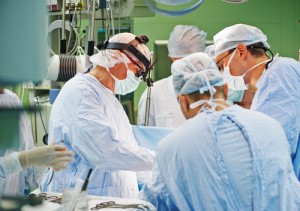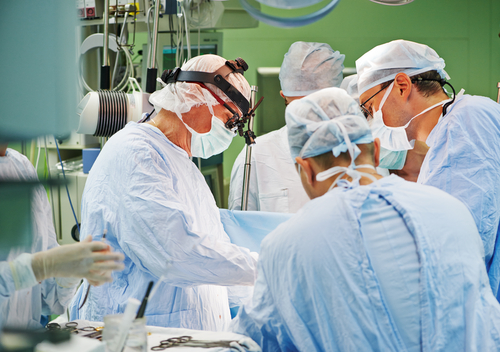 A new study has shown that robot-assisted prostate removal surgery has increased over the last years in the U.S. as a method to treat prostate cancer. Moreover, even though these surgeries are expensive, it seems their costs are decreasing over time.
A new study has shown that robot-assisted prostate removal surgery has increased over the last years in the U.S. as a method to treat prostate cancer. Moreover, even though these surgeries are expensive, it seems their costs are decreasing over time.
Robot-assisted radical prostatectomy (RARP) is done through small incisions in the belly with robotic arms that translate the surgeon’s hand motions into more precise action. This surgery usually requires specially trained doctors, and the main objective is to remove all of the cancer.
In the study entitled “The impact of robotic surgery on the surgical management of prostate cancer in the USA” and published in the BJUI International journal, researchers from Harvard Medical School, the Dana-Farber Cancer Institute, and Brigham and Women’s Hospital, wanted to understand the surgeon characteristics associated with RARP adoption and determine the impact of this adoption on practice patterns and cost.
As such, they preformed a retrospective cohort study with 489,369 men who underwent non-RARP or RARP in the USA from 2003 to 2010.
RARP adoption was defined as more than 50% of annual radical prostatectomies (RP) with the robotic approach, and was found to increase from 0.7% to 42% of surgeons performing RP.
Furthermore, the team concluded that high volume surgeons (preforming more than 24 RP per year) were significantly more likely to adopt RARP, with adoption becoming more common among surgeons at teaching hospitals and at intermediate and large-sized hospitals from 2005 to 2007. After 2007, adoption was more common among surgeons at urban hospitals.
According to this study, RARP adoption was associated with increased RP volume, and while the annual number of surgeons performing RP decreased, the proportion of cases performed by high-volume surgeons increased from 10% to 45%.
Regarding the costs, RARP was proven to be more expensive, disproportionally contributing to the 40% increase in annual prostate cancer surgery expenditures. Nonetheless, RARP costs decreased and plateaued at around $10,000 while non-RARP costs increased to nearly $9,000 by the end of the study.
This study demonstrated that RARP was extensively adopted in the US between 2003 and 2010, especially by high-volume surgeons, while associated with a centralization of care and increased economic burden for prostate cancer surgery.
“Our findings give insights on the adoption of not just robotic technology but future surgical innovations in terms of the general pattern of early diffusion, the potential impact on costs of new and competing treatments, and the alternations in practices patterns such as centralization of care to higher volume providers,” lead author Steven Chang, MD, MS, of Harvard Medical School concluded in a Wiley press release.

